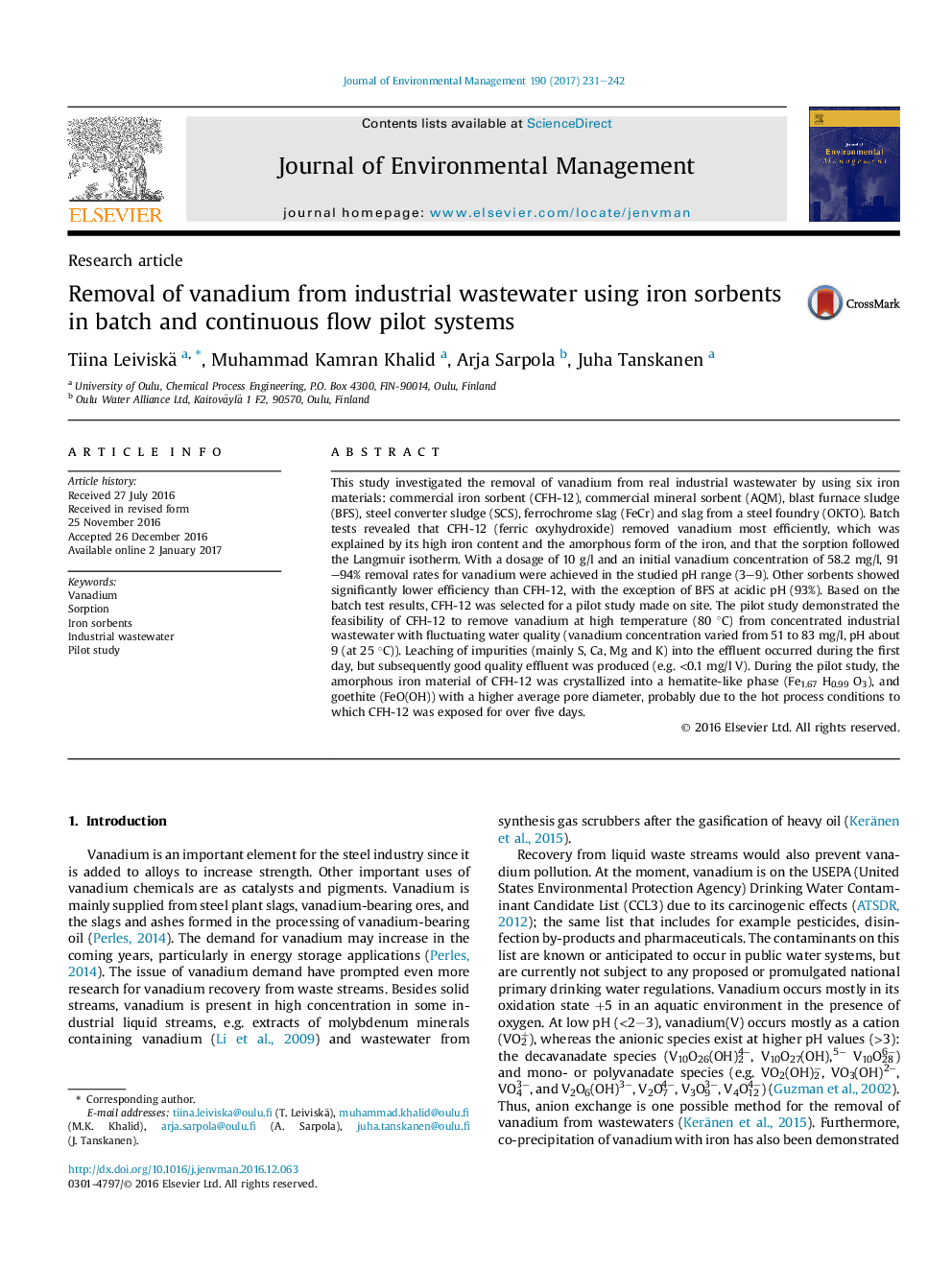| کد مقاله | کد نشریه | سال انتشار | مقاله انگلیسی | نسخه تمام متن |
|---|---|---|---|---|
| 5116901 | 1485225 | 2017 | 12 صفحه PDF | دانلود رایگان |
- Ferric oxyhydroxide removed vanadium from industrial wastewater most efficiently.
- Ferric oxyhydroxide transformed into hematite and goethite in the pilot study.
- Leaching of impurities occurred but subsequently good quality effluent was obtained.
This study investigated the removal of vanadium from real industrial wastewater by using six iron materials: commercial iron sorbent (CFH-12), commercial mineral sorbent (AQM), blast furnace sludge (BFS), steel converter sludge (SCS), ferrochrome slag (FeCr) and slag from a steel foundry (OKTO). Batch tests revealed that CFH-12 (ferric oxyhydroxide) removed vanadium most efficiently, which was explained by its high iron content and the amorphous form of the iron, and that the sorption followed the Langmuir isotherm. With a dosage of 10 g/l and an initial vanadium concentration of 58.2 mg/l, 91-94% removal rates for vanadium were achieved in the studied pH range (3-9). Other sorbents showed significantly lower efficiency than CFH-12, with the exception of BFS at acidic pH (93%). Based on the batch test results, CFH-12 was selected for a pilot study made on site. The pilot study demonstrated the feasibility of CFH-12 to remove vanadium at high temperature (80 °C) from concentrated industrial wastewater with fluctuating water quality (vanadium concentration varied from 51 to 83 mg/l, pH about 9 (at 25 °C)). Leaching of impurities (mainly S, Ca, Mg and K) into the effluent occurred during the first day, but subsequently good quality effluent was produced (e.g. <0.1 mg/l V). During the pilot study, the amorphous iron material of CFH-12 was crystallized into a hematite-like phase (Fe1.67 H0.99 O3), and goethite (FeO(OH)) with a higher average pore diameter, probably due to the hot process conditions to which CFH-12 was exposed for over five days.
314
Journal: Journal of Environmental Management - Volume 190, 1 April 2017, Pages 231-242
